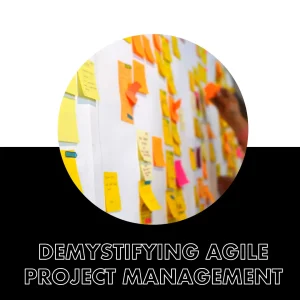I. Introduction
Welcome, dear reader! Today, I want to share with you something that has been instrumental in the success of my own projects and those of countless others: effective stakeholder management. If you’re working on any project, big or small, the way you manage stakeholders can make or break your success. And the good news is that there are seven principles of stakeholder management that can guide you along the way.
You might be wondering, why is stakeholder management so important? Well, let me tell you. The relationships you build with stakeholders can be the catalyst for project success. By actively engaging with stakeholders, you can better understand their needs, address their concerns, and align their expectations with your project goals. This, in turn, can lead to increased buy-in, smoother project execution, and ultimately, better project outcomes.
In this blog post, we’ll explore these seven principles of stakeholder management, and I’ll provide you with practical tips and advice on how to apply them to your own projects. By the end of our journey together, you’ll be well-equipped to improve stakeholder engagement and set yourself up for project success. So, buckle up, and let’s dive into the fascinating world of stakeholder management!
II. Principle 1: Identify Stakeholders
Let’s start our adventure by tackling the first principle of stakeholder management: identifying stakeholders. You may have heard the saying, “You can’t manage what you don’t measure.” Well, in our case, you can’t engage stakeholders if you don’t know who they are!
A. Explanation of stakeholder identification
Stakeholder identification is the process of determining all the individuals, groups, or organizations that may be affected by or have an interest in your project. These can include internal team members, clients, suppliers, investors, regulators, or even community members.
B. Techniques for identifying stakeholders
There are several techniques to help you identify your project’s stakeholders. One of my personal favorites is the brainstorming session. Gather your team and make a list of all the potential stakeholders you can think of. Don’t worry about filtering at this stage; the more, the merrier! You can also consult project documentation, such as project charters or organizational charts, to identify stakeholders.
Another useful tool is the stakeholder map. This visual representation can help you categorize stakeholders based on their power and interest in the project. By plotting stakeholders on this map, you can prioritize your efforts and focus on engaging those who are most crucial to your project’s success.
C. Importance of early identification
I cannot stress enough the importance of identifying stakeholders early in the project. The sooner you know who your stakeholders are, the more time you have to engage them, understand their needs, and address their concerns. Early identification can help prevent surprises, reduce resistance, and foster a positive and collaborative project environment.
Now that we’ve laid the groundwork by identifying our stakeholders, we’re ready to move on to the next principle: understanding stakeholder needs and expectations. Stay tuned, because this is where things get even more interesting!
III. Principle 2: Understand Stakeholder Needs and Expectations
With our stakeholders identified, it’s time to dig deeper and uncover their needs and expectations. This step is crucial, as it helps us tailor our engagement strategies and ensure that our project outcomes align with stakeholder interests.
A. The role of communication in understanding needs and expectations
The key to understanding stakeholder needs and expectations lies in effective communication. By fostering open and honest communication channels, you create an environment where stakeholders feel comfortable sharing their thoughts, concerns, and aspirations. Trust me, nothing beats the feeling of knowing you’re on the same page with your stakeholders!
B. Tools and techniques for gathering information
There are numerous tools and techniques you can use to gather information about stakeholder needs and expectations. Surveys and questionnaires can provide quantitative data, while interviews and focus groups can offer more qualitative insights. Don’t be afraid to get creative with your approach! For instance, I’ve used informal coffee meetings to create a relaxed atmosphere and encourage candid conversations.
Another technique I find particularly helpful is the stakeholder analysis matrix. This tool helps you capture information on stakeholder interests, expectations, and potential impact on the project. By filling out the matrix, you can identify patterns and trends, which can inform your engagement strategies.
C. Prioritizing stakeholder needs
As much as we’d like to accommodate everyone’s needs and expectations, we must also recognize the reality of limited resources and competing priorities. To navigate this challenge, prioritize stakeholder needs based on factors such as urgency, impact, and alignment with project goals. This prioritization will help you focus your efforts where they matter most and strike a balance between stakeholder satisfaction and project objectives.
With a clear understanding of stakeholder needs and expectations, we’re ready to take the next step in our stakeholder management journey: engaging stakeholders. Keep reading to discover how to build strong relationships and create a collaborative project environment!
IV. Principle 3: Engage Stakeholders
Now that we’ve identified our stakeholders and gained insights into their needs and expectations, it’s time for the fun part – engaging them! This is where the magic happens, as we work together to build trust, rapport, and a shared vision for our project’s success.
A. Establishing trust and rapport
Building trust and rapport with stakeholders is essential for fostering positive relationships and promoting open communication. I’ve found that being transparent, proactive, and accountable goes a long way in gaining stakeholder trust. Always be honest about the project’s progress, challenges, and constraints, and don’t shy away from sharing both the good and the not-so-good news.
B. Inclusive communication strategies
When it comes to engaging stakeholders, inclusivity is key. Create a communication plan that considers the needs, preferences, and cultural backgrounds of your stakeholders. This may involve using various communication channels, such as email, phone calls, or face-to-face meetings, as well as tailoring your message and tone to resonate with different stakeholder groups. Remember, one size doesn’t fit all in stakeholder engagement!
C. Addressing concerns and feedback
Listening to stakeholder concerns and feedback is an essential part of engagement. Be open to criticism, and approach it as an opportunity for growth and improvement. When stakeholders share their concerns, acknowledge their input, and work together to find a solution. This collaborative approach not only addresses stakeholder needs but also reinforces trust and fosters a sense of ownership in the project.
By engaging stakeholders effectively, we create a strong foundation for our project’s success. But our work doesn’t end here! In the next section, we’ll explore how to monitor and control stakeholder engagement, ensuring that our efforts remain on track and continue to yield positive results. Stay with me – you won’t want to miss it!
V. Principle 4: Monitor and Control Stakeholder Engagement
So far, we’ve identified our stakeholders, understood their needs and expectations, and engaged them in our project. But stakeholder management doesn’t stop there! To ensure continued success, it’s essential to monitor and control stakeholder engagement throughout the project lifecycle.
A. Importance of ongoing monitoring
Ongoing monitoring of stakeholder engagement is vital for detecting shifts in stakeholder interests, expectations, or satisfaction levels. By keeping a close eye on these changes, you can proactively address any issues before they escalate and threaten your project’s success. In my experience, regular check-ins with stakeholders have helped me uncover hidden challenges and identify new opportunities for collaboration.
B. Tools for tracking stakeholder engagement
There’s no shortage of tools and techniques to help you track stakeholder engagement. One of the simplest methods is maintaining a stakeholder register, where you can log information about stakeholder interactions, concerns, and feedback. Periodic stakeholder surveys or feedback sessions can also provide valuable insights into stakeholder satisfaction and engagement levels.
Another approach is to use project management software with built-in stakeholder tracking features. These tools can help you monitor engagement, generate reports, and visualize stakeholder relationships, making it easier to stay on top of your stakeholder management efforts.
C. Adjusting strategies based on feedback
As you monitor stakeholder engagement, you may discover areas where your strategies need to be adjusted. Perhaps a stakeholder’s priorities have shifted, or new concerns have emerged. Be open to revisiting and refining your engagement strategies to address these changes and ensure that you continue to meet stakeholder needs effectively.
With a strong monitoring and control system in place, you’ll be well-prepared to navigate the ever-evolving landscape of stakeholder engagement. Up next, we’ll tackle the challenge of managing stakeholder conflict – a vital skill for any project manager. Keep reading to learn how to turn potential roadblocks into opportunities for growth and collaboration!
VI. Principle 5: Manage Stakeholder Conflict
As you engage with stakeholders, it’s natural for conflicts to arise from time to time. Differing opinions, interests, and expectations can create friction, but don’t let this discourage you! By effectively managing stakeholder conflict, you can turn these challenges into opportunities for growth, collaboration, and ultimately, project success.
A. Causes of stakeholder conflict
Stakeholder conflict can stem from various sources, such as misaligned expectations, competition for resources, or differing perspectives on project priorities. Recognizing the root cause of conflict is the first step toward resolving it effectively.
B. Techniques for resolving conflicts
Conflict resolution is a vital skill for any project manager, and there are several techniques to help you navigate these tricky situations. One approach I’ve found particularly effective is the “interest-based relational” (IBR) method. This technique focuses on addressing the underlying interests of conflicting parties, rather than simply trying to compromise on their positions.
To apply the IBR method, follow these steps:
- Separate the people from the problem: Focus on the issue at hand, rather than letting personal feelings cloud your judgment.
- Identify stakeholders’ underlying interests: Look beyond their stated positions and try to understand their motivations and concerns.
- Generate multiple options for resolution: Brainstorm creative solutions that address both parties’ interests.
- Evaluate options based on objective criteria: Assess the proposed solutions using impartial standards, such as cost, feasibility, or alignment with project goals.
C. Strategies for preventing conflicts
While it’s essential to know how to resolve conflicts, prevention is even better! By proactively addressing potential sources of conflict, you can minimize the likelihood of issues arising in the first place. Some strategies for conflict prevention include:
- Maintain open and transparent communication: Keep stakeholders informed about project progress, challenges, and decisions.
- Regularly review stakeholder needs and expectations: Ensure that your engagement strategies remain aligned with stakeholder interests.
- Encourage collaboration and inclusivity: Foster a project environment where stakeholders feel heard, valued, and involved.
Now that you’re equipped to manage stakeholder conflict, you’re one step closer to mastering the art of stakeholder management. In the next section, we’ll explore how to align stakeholder expectations with project goals – a critical aspect of driving project success. Stay tuned for more valuable insights and tips!
VII. Principle 6: Align Stakeholder Expectations with Project Goals
As we continue our journey through the world of stakeholder management, we arrive at a crucial milestone: aligning stakeholder expectations with project goals. This alignment is the glue that holds everything together, ensuring that all parties are working towards a common objective and that your project stays on track for success.
A. Importance of alignment
When stakeholder expectations are aligned with project goals, you create a powerful synergy that drives project momentum. Stakeholders become more invested in the project, collaboration flourishes, and potential obstacles are more easily overcome. In my experience, achieving this alignment has been a game-changer, turning even the most challenging projects into resounding successes.
B. Methods for ensuring alignment
So, how can we ensure that stakeholder expectations and project goals are in harmony? Here are some methods I’ve found helpful:
- Develop a clear project vision and mission: Clearly articulate your project’s purpose, objectives, and desired outcomes. This provides a solid foundation for aligning stakeholder expectations.
- Communicate project goals and progress regularly: Keep stakeholders informed about project developments, milestones, and any changes to the project plan. This transparency helps maintain alignment throughout the project lifecycle.
- Involve stakeholders in goal-setting and decision-making: By involving stakeholders in these processes, you can create a sense of ownership and ensure that their expectations are considered and integrated into project goals.
- Establish a feedback loop: Encourage stakeholders to provide feedback on project progress, and be open to adjusting goals and strategies as needed to address stakeholder concerns and maintain alignment.
C. Managing changing expectations
As the project progresses, it’s normal for stakeholder expectations to evolve. To effectively manage these changes, maintain open lines of communication, and be willing to reassess and adjust project goals as needed. By staying flexible and responsive, you can ensure that your project remains aligned with stakeholder expectations and stays on the path to success.
We’re almost at the end of our stakeholder management journey! In the next section, we’ll dive into the final principle: evaluating and improving stakeholder management practices. Don’t miss out on these valuable insights to help you continually refine and enhance your stakeholder engagement strategies.
VIII. Principle 7: Evaluate and Improve Stakeholder Management Practices
As we reach the final stop on our stakeholder management adventure, it’s time to reflect on our practices and look for opportunities to grow and improve. After all, the path to mastery is a lifelong journey, and there’s always something new to learn!
A. The importance of continuous improvement
Just like any other skill, stakeholder management can be honed and refined over time. By regularly evaluating and improving your practices, you can strengthen your relationships with stakeholders, enhance your project outcomes, and become a more effective project manager.
B. Methods for evaluating stakeholder management
To evaluate your stakeholder management practices, consider the following methods:
- Post-project reviews: Conduct a thorough review of your project’s stakeholder management efforts, identifying successes, challenges, and lessons learned.
- Stakeholder feedback: Gather feedback from stakeholders on your engagement strategies, communication, and overall performance. This can be done through surveys, interviews, or informal conversations.
- Self-assessment: Reflect on your own stakeholder management skills and identify areas for growth and improvement.
C. Strategies for improvement
Based on your evaluation, develop a plan to enhance your stakeholder management practices. Here are some strategies to consider:
- Invest in professional development: Attend workshops, conferences, or training courses to expand your knowledge and skills in stakeholder management.
- Seek mentorship: Find a mentor or coach with expertise in stakeholder management to provide guidance, support, and feedback on your efforts.
- Stay informed: Stay up-to-date on the latest trends and best practices in stakeholder management by reading articles, blogs, or books on the subject.
- Test and iterate: Don’t be afraid to experiment with new approaches, tools, or techniques, and refine your practices based on the results.
With these strategies in hand, you’ll be well on your way to becoming a stakeholder management superstar!
And there you have it – the seven principles of stakeholder management, your guide to improved stakeholder engagement and project success. I hope our journey together has been enlightening, inspiring, and full of valuable insights. Now, it’s time for you to apply these principles to your own projects and watch as your stakeholder relationships flourish and your projects thrive. Good luck, and remember – the path to mastery is a lifelong journey. Keep learning, growing, and striving for excellence in all that you do!
IX. Conclusion: The Power of Effective Stakeholder Management
As we bring our exploration of stakeholder management to a close, let’s take a moment to reflect on the incredible power that effective stakeholder management holds. By mastering the seven principles we’ve discussed, you can unlock the true potential of your projects and experience the many benefits that come with strong stakeholder relationships.
A. Recap of the 7 Principles
To recap, the seven principles of stakeholder management are:
- Identify Stakeholders
- Understand Stakeholder Needs and Expectations
- Engage Stakeholders
- Monitor and Control Stakeholder Engagement
- Manage Stakeholder Conflict
- Align Stakeholder Expectations with Project Goals
- Evaluate and Improve Stakeholder Management Practices
By diligently applying these principles, you can create a collaborative project environment where stakeholders are engaged, empowered, and invested in your project’s success.
B. The impact of strong stakeholder management
When you excel at stakeholder management, the benefits are numerous. You’ll enjoy improved communication, increased trust and rapport, enhanced project outcomes, and ultimately, greater overall success. In my own journey as a project manager, the ability to effectively manage stakeholders has been a game-changer, and I have no doubt that it will be for you, too.
C. Your journey begins now
As we part ways, I encourage you to take these principles to heart and apply them to your own projects. Remember, the path to mastery is a lifelong journey, so stay curious, open-minded, and dedicated to continuous growth and improvement.
Thank you for joining me on this adventure through the world of stakeholder management. I wish you the best of luck in your future projects and look forward to hearing about your successes. Here’s to thriving relationships, exceptional project outcomes, and a brighter future for all!
To find out how Artificial Intelligence is changing the Project Management landscape, you have enjoy reading this article https://www.shaunstoltz.com/did-artificial-intelligence-just-change-everything-about-project-management/
Find out more about Shaun Stoltz https://www.shaunstoltz.com/about/
This post was written by an AI and reviewed/edited by a human.



